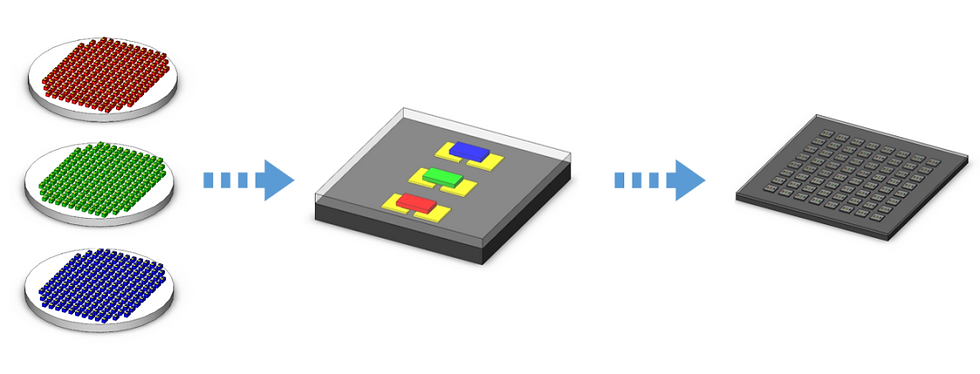Exploring the Spectrum of LED Technologies: SMD, COB, GOB, and MIP
- DS Visual

- Jun 20, 2024
- 3 min read
Updated: Jan 10
LED technology has revolutionized lighting and displays with its energy efficiency, durability, and versatility. Among the different types of LEDs, SMD, COB, GOB, and MIP each offer unique advantages tailored for specific applications. In this blog, we will explore these four technologies, their features, benefits, and typical use cases.
SMD (Surface-Mount Device)
Overview: SMD LEDs are widely used in modern electronics due to their flexibility and efficiency. They are mounted directly onto the surface of printed circuit boards (PCBs), allowing for compact and versatile designs.
Features:
Compact Size: SMD LEDs are small, enabling high-resolution displays with closely packed LEDs.
Color Versatility: Can incorporate multiple colors within a single package, allowing for a wide range of colors through precise control.
Efficient Heat Dissipation: Effective thermal management due to their design.
Applications: Commonly used in indoor displays, smartphones, TV screens, and various consumer electronics.
Benefits: SMD LEDs provide high brightness and color accuracy, making them ideal for detailed and high-resolution displays.
COB (Chip On Board)
Overview: COB LEDs involve mounting multiple LED chips directly onto a substrate to form a single module. This technology enhances thermal conductivity and light efficiency.
Features:
High Lumen Density: Produces a significant amount of light from a small surface area, resulting in very bright illumination.
Uniform Light Output: Provides consistent and uniform light, reducing the multiple shadows that can occur with other LED types.
Superior Thermal Management: Efficient heat dissipation due to direct mounting on the substrate.
Applications: Ideal for high-power applications such as street lights, high-bay lighting, and other commercial lighting solutions.
Benefits: COB LEDs are known for their high brightness and uniform light output, making them suitable for intense lighting applications.
GOB (Glue On Board)
Overview: GOB technology involves applying a transparent glue layer on the LED surface, enhancing durability and weather resistance.
Features:
Enhanced Protection: The glue layer protects LEDs from moisture, dust, and physical damage, making them highly durable.
Improved Visual Performance: The protective layer can reduce reflection and enhance contrast.
Extended Longevity: Increased resistance to environmental factors extends the lifespan of the LEDs.
Applications: Suitable for outdoor displays, rental screens, and environments requiring high durability and weather resistance.
Benefits: GOB LEDs provide enhanced protection and durability, making them ideal for outdoor and rugged environments.
MIP (Micro LED In Package)
Overview: MIP technology is an advanced innovation where individual micro LEDs are packaged into a single module, offering superior performance and efficiency.
Features:
High Resolution: Enables the creation of displays with extremely high resolution, suitable for detailed and vibrant images.
Energy Efficiency: Consumes less power compared to traditional LED technologies while providing bright and vivid displays.
Enhanced Durability: High resistance to environmental factors, ensuring long-lasting performance.
Applications: Used in advanced display technologies such as next-generation TVs, VR headsets, and other high-resolution display devices.
Benefits: MIP LEDs offer high resolution and energy efficiency, essential for cutting-edge display technologies.
Comparison and Conclusion
Each LED technology has its own set of strengths, making them suitable for different applications:
SMD LEDs: Versatile and high resolution, ideal for indoor displays and consumer electronics.
COB LEDs: Bright and uniform light, perfect for high-intensity lighting applications.
GOB LEDs: Durable and weather-resistant, suitable for outdoor and rental displays.
MIP LEDs: High resolution and energy-efficient, essential for advanced display technologies.
Understanding these technologies helps in selecting the right type of LED for specific applications, ensuring optimal performance and longevity. As LED technology continues to evolve, further innovations will likely enhance efficiency, durability, and versatility, shaping the future of lighting and displays.
For more information of LEDs and complimentary consultation for your requirements, check out our product page at Tetsu Series














Comments